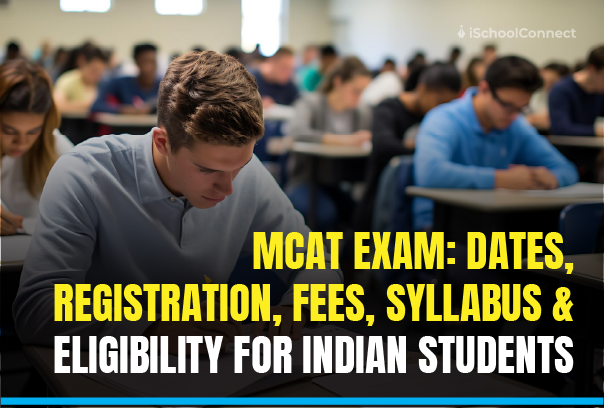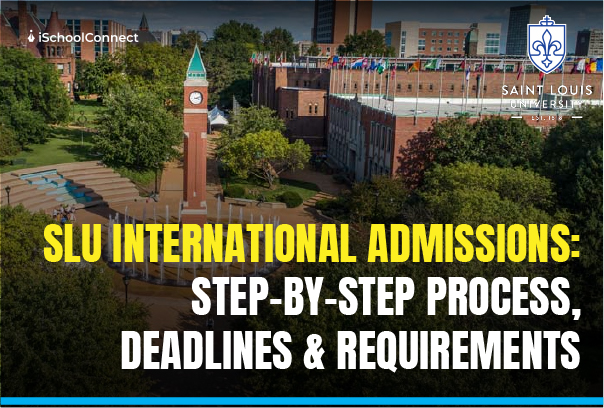Table of Contents
- What is CPT?
- CPT Visa Validity
- CPT Visa Validity for International Students
- Documents required for CPT visa validity for international students
- Eligibility for CPT Visa Validity for International Students
- How to Apply for the CPT Visa
- Visa for Different Countries
- Benefits of Getting CPT Visa Validity for International Students
- Summary
- FAQs
Curricular Practical Training (CPT) is an indispensable opportunity for international students on F-1 visas, allowing them to gain essential work experience while pursuing their studies in the United States. With a validity of up to 12 months, CPT enables students to engage in internships or cooperative education programs directly related to their academic curriculum. This unique program not only enhances practical skills but also boosts employability by providing real-world exposure in a competitive job market. Understanding the niceties of CPT visa validity for international students is crucial for aiming to maximize their educational journey and career prospects in the U.S.
Also Read: Difference between CPT vs OPT
What is CPT?
Curricular Practical Training (full form of CPT) is a visa policy established for international students on F-1 visas, allowing them to gain practical work experience in their field of study parallelly with their academic studies. Authorized by the U.S. Citizenship and Immigration Services (USCIS), CPT enables students to participate in internships or cooperative education programs that are integral to their academic curriculum. This training must occur before the student completes their degree program and can be either part-time or full-time, depending on the student’s enrollment status and the nature of the internship.
CPT Visa Validity
- Garnering Credible Work Experience: Students can gain real-world experience in their field of study, which can help them enhance their skills and employment opportunities.
- Getting Financially Independent: Students can earn money by working part-time during the academic year and full-time during summer breaks.
- Enhancing Work Portfolios and Resumes: Students can enhance their resumes with relevant work experience, which can help them after graduation.
- Exploring & Optimizing Networking Opportunities: Students can connect with employers and industry professionals, which can open doors for future job opportunities.
- Learning about CPT in Academic Curriculum: Some academic institutions offer academic credit for teaching CPT in their academic curriculum.
- Prior approval required: Students must get prior approval for CPT, and the work experience must be related to their academic program.
- Eligibility for CPT is Mandatory: Students must be in F-1 status, have been enrolled full-time for at least one academic year, and be making normal progress toward degree completion.
- Part-time or Full-time work repertoire maintained in CPT: Students can work part-time (20 hours or less per week) or full-time (more than 20 hours per week).
Also Read: Types of US Visas
CPT Visa Validity for International Students
Curricular Practical Training (CPT) is a crucial program for international students on F-1 visas, allowing them to gain practical work experience while studying in the United States.
Here are key points regarding the validity and important considerations for CPT:
CPT Visa Validity Pointers for International Students
Maximum Duration: The CPT visa is valid for a maximum of 12 months. This duration applies to the entire period of CPT employment, whether part-time or full-time.
Extensions: While CPT can be extended, it cannot exceed 12 months in total. If a student engages in full-time CPT for 12 months or more, they become ineligible for Optional Practical Training (OPT) at the same degree level.
- On-Campus Jobs out of Purview– Only off-campus jobs are eligible for CPT.
- Grant of Semester-specific Authorizations-Usually, CPT authorization is given in one semester or summer session increments.
- 12 Months is the CPT Visa’s duration upper limit-Throughout your whole academic program, you are only permitted to take part in CPT for a total of 12 months.
- Studies should be continued in tandem– To be eligible for CPT, you must continue your studies in full.
- Work Permit cancelled if you drop out of school– You will no longer be permitted to work under CPT if you lose your job or drop out of school for the duration of a course.
Documents required for CPT visa validity for international students
When applying for Curricular Practical Training (CPT) as an international student on an F-1 visa, specific documents are typically required to ensure eligibility and compliance with U.S. immigration regulations.
Essential Documents
- CPT Online Workshop Completion Certificate: Proof of completion of any required workshops offered by your institution regarding CPT.
- Academic Recommendation Form: A form completed by your academic advisor or designated school official (DSO) verifying that the training is integral to your curriculum.
- In-Depth Description of Training: A detailed description of the training or internship provided by your employer, outlining the job responsibilities and how they relate to your field of study.
- Current I-20 Form: A copy of your most recent Form I-20, which must reflect your current enrollment status.
- Printout of Electronic Form I-94: This document shows your arrival and departure record in the U.S., confirming your legal entry status.
- Job Offer Letter: A signed letter from the employer detailing the position, job description, start and end dates, hours worked per week, and employer’s address.
Eligibility for CPT Visa Validity for International Students
To qualify for Curricular Practical Training (CPT) as an international student on an F-1 visa, specific eligibility criteria must be met.
- Valid F-1 Visa Status: Students must hold a valid F-1 visa and maintain their status throughout their studies in the U.S.
- Enrollment in a Degree Program: Students must be enrolled in a degree program at an accredited U.S. institution and have completed at least one full academic year (typically two semesters or three quarters) of full-time study.
- Job Offer Requirement: A valid job or internship offer related to the student’s field of study is necessary before applying for CPT. The employment must be integral to the academic curriculum.
- Academic Advisor Approval: The Designated School Official (DSO) or academic advisor must approve the CPT application, confirming that the training is essential to the student’s academic program.
- Not Enrolled in Intensive English Programs: Students enrolled solely in intensive English language training programs are generally not eligible for CPT.
- Training Must Be Related to the Field of Study: The work experience gained through CPT must directly relate to the student’s major and be an integral part of their curriculum.
Also Read: F1 visa interview questions and how to answer them
How to Apply for the CPT Visa
Steps to Apply for CPT Visa Validity for International Students:
- Consult Your DSO or Academic Advisor:
Schedule a meeting with your Designated School Official (DSO) or academic advisor to discuss CPT eligibility, requirements, and available programs at your institution.
- Secure a Job Offer:
Obtain a job offer letter from your prospective employer. This letter should be on official letterhead and include:
- Your name
- Job title
- Job description
- Employer’s address
- Start and end dates of employment
- Whether the position is full-time or part-time.
- Complete the CPT Application:
Fill out the CPT application form provided by your university. This typically includes personal information, job offer details, and certification from your DSO.
- Gather Required Documentation:
Ensure you have all necessary documents, which may include:
- Proof of class registration
- A completed CPT online workshop certificate (if required)
- Academic recommendation form.
- Submit Your Application:
Submit the completed CPT application along with the job offer letter and any other required documents to your DSO. They will review your application and verify your eligibility.
- Receive CPT Authorization:
Once approved, your DSO will issue an updated Form I-20 that includes CPT authorization. This document will specify the employer, start date, and end date of your CPT.
- Start Your Employment:
Begin working on the specified start date as outlined in your CPT authorization. Make sure to adhere to the conditions stated in your I-20 regarding hours worked and employment details.
Visa for Different Countries
| How to apply for Study Visa in Canada | New Zealand student visa |
| French Student Visa | How to Apply for Dubai study visa |
Benefits of Getting CPT Visa Validity for International Students
1. Earning Potential
Income Generation: CPT allows students to earn money while studying, helping cover tuition and living expenses. The wages are typically comparable to those received by U.S. citizens in similar roles, providing financial independence.
2. Practical Work Experience
- Real-World Application: Students gain hands-on experience in their field of study, which enhances their understanding of theoretical concepts and prepares them for future employment.
- Skill Development: Engaging in CPT helps students develop essential skills such as communication, teamwork, problem-solving, and time management, which are highly valued by employers.
3. Enhanced Employability
- Competitive Edge: Having practical work experience on a resume significantly boosts employability. Employers often prefer candidates with relevant industry experience, making CPT a valuable asset when job hunting post-graduation.
4. Networking Opportunities
- Professional Connections: Working in the U.S. allows students to build a professional network, establishing contacts with industry professionals that can lead to mentorship and future job opportunities.
5. Improved Language Skills
- Professional English Proficiency: CPT provides an opportunity to enhance English language skills in a professional context, which is crucial for many employers both in the U.S. and internationally.
6. Career Exploration
- Diverse Experiences: Through CPT, students can explore various career paths within their field, helping them identify strengths and interests that inform their future career choices.
7. Cultural Exposure
- Immersion in U.S. Work Culture: Participating in CPT allows international students to experience the cultural and professional environment of the U.S., contributing to personal growth and adaptability in diverse settings.
8. Immediate Start Opportunities
- Early Work Experience: Some programs allow students to begin working as early as their first semester, providing an advantage over those who must wait longer for internships or practical training opportunities.
Summary
Curricular Practical Training (CPT) allows international students on F-1 visas to gain practical work experience in their field of study while still enrolled in school. CPT visa validity for international students must be integral to their curriculum and requires prior approval. Students can work part-time during the academic year and full-time during breaks, with a maximum duration of 12 months. To qualify, students must maintain valid F-1 status, complete at least one academic year, and secure a job offer related to their studies. Benefits include income generation, skill development, and enhanced employability.
FAQs
Ques.1: How long can I work on CPT?
Answer: CPT allows international students to work for a maximum of 12 months, part-time or full-time. If you engage in full-time CPT for 12 months or more, you will become ineligible for Optional Practical Training (OPT) at the same degree level.
Ques.2: Can I apply for CPT in my first year of study?
Answer: No, to be eligible for CPT, you must have completed at least one full academic year (typically two semesters or three quarters) of full-time study at an accredited U.S. institution.
Ques.3: Does CPT require a job offer before applying?
Answer: Yes, students must have a valid job or internship offer related to their field of study before applying for CPT. The employment must be integral to the academic curriculum.






